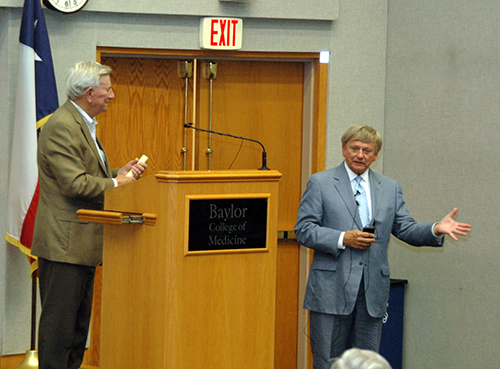Triggered: Understanding myofascial pain syndrome
Most people chalk it up to typical aches and pains, but myofascial pain syndrome is more than that. In fact, an estimated nine million Americans are living with this chronic pain condition.
We asked Dr. Paul Paily, a board-certified physical medicine and rehabilitation specialist at Baylor College of Medicine, to share some insight and what can be done to help individuals manage their pain.
What is myofascial pain syndrome?
Myofascial pain syndrome is defined by specific tender areas in skeletal muscle that are trigger points for pain elsewhere in the body. Symptoms include worsening pain when the muscle is stretched, limited range of motion, and muscles that are stiff or inflexible.
“For example, if I were to put pressure on a patient’s thumb knuckle, they could also feel pain in a completely unrelated part of their body like their shoulder,” Paily said.
Myofascial pain syndrome could be caused by repetitive movements like bending over and reaching up again and again as a house painter does for extended periods of time.
Is it linked to fibromyalgia?
While myofascial pain syndrome has been suggested by some to be a possible precursor for fibromyalgia, there are some distinct differences between these two chronic pain disorders.
“Myofascial pain syndrome is more focused on localized muscle points while fibromyalgia is more widespread throughout the body,” Paily said.
What are some treatment options?
When it comes to medication management, myofascial pain syndrome symptoms can be managed in a variety of ways. “It can go from your typical over-the-counter pain medications to muscle relaxers to neuromodulators.”
An additional option is mechanical management, which could involve physical therapy, stretching exercises, or even acupuncture. Paily also recommends limiting the triggering activity that started the pain in the first place.
“Your symptoms are valid. Just because a test doesn’t necessarily show something is wrong, that doesn’t mean it doesn’t exist.”
Dr. Paily is an assistant professor in the H. Ben Taub Department of Physical Medicine and Rehabilitation at Baylor. Learn more about the Physical Medicine and Rehabilitation Clinic.
-By Anna Kiappes




